SMASH FISH
SMASH FISH
Let's Superpower Our Kids
10% off discount code when you subscribe
What Are SMASH Fish?
We highlight salmon often in our SuperHero Foods line-up, but salmon has four other wonderful super friends: mackerel, anchovies, sardines, and herring. Together these five fish are known as SMASH fish. We love these small super fish as they contain less mercury than larger fish. Mercury is toxic to all of us, especially our little developing ones.
The benefits we discuss below are specific to wild-caught SMASH fish.
Avoid farmed fish! Farmed fish are treated like conventional animals such as cows and chickens. They are fed corn, wheat, soybean, candy, and other UNKNOWN stuff! In addition, additives like synthetic astaxanthin (the antioxidant that turns salmon pink) are used in farm-raised salmon. Farm-raised salmon are “naturally” gray and colorless unless they are fed additives to influence their color. Remember, we ultimately eat what the fish eat. The red hue in wild caught salmon is from the potent natural astaxanthin not from manmade, potentially disease-causing red dye.

Save & print our
Nutritional charts
Sign up and get access to our exclusive downloadable resources
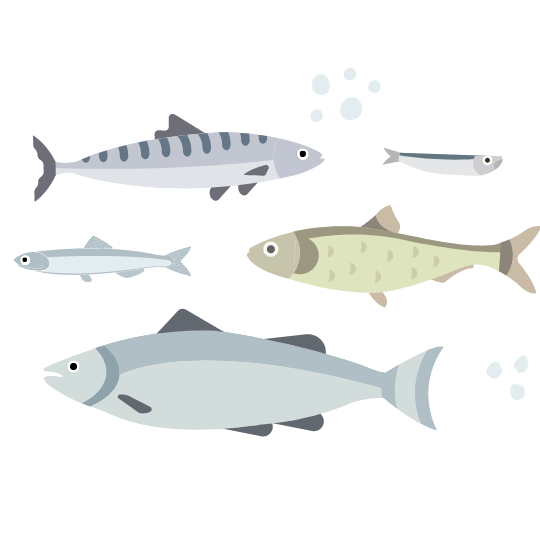
Benefits of SMASH Fish
*Caution: Some of our kids may have life threatening allergies from SMASH fish. If you notice an allergy, stop consuming the fish and call your pediatrician.
- SMASH fish are an excellent source of protein. Salmon contains up to 20-25 grams/3 oz filet. This protein contains all the building blocks (amino acids) needed for critical bodily structures such as muscles, hormones, and neurotransmitters.
- SMASH fish are among the very few natural food sources that contain Vitamin D.
- SMASH fish are rich in minerals. Salmon is especially high in potassium. If there are small edible bones in the fish, as there often are in sardines and anchovies, these bones are an excellent source of calcium and phosphorus. Salmon is also very high in selenium (75-85% DV) which is good for your thyroid.
- SMASH fish are rich in Vitamins such as B vitamins.
- SMASH fish are cardioprotective. They reduce inflammation, blood pressure, and keep the cell lining our heart arteries (endothelial cells) healthy.
- SMASH fish can boost mood by providing the amino acids necessary for “feel good” neurotransmitters and hormones.
- The omega 3 fatty acids in SMASH fish have been shown to reduce cognitive decline and slow down the onset of Alzheimer’s disease.
- SMASH fish provide EPA and DHA which are critical for fetal brain and nervous system development. It is important to consume EPA- and DHA-containing foods during pregnancy.
- Salmon has an antioxidant, astaxanthin, which is responsible for its pink color. It is a carotenoid with neuroprotective traits. It promotes a healthy and functioning brain.
- SMASH fish promote healthy weight by helping you feel satiated due to the fish’s fat and protein content.
- SMASH fish are a good source of healthy fat which fuels our bodies. Check out our Healthy Fats resource guide for an extensive breakdown of healthy and unhealthy fats. There is approximately 5g fat/3oz serving in wild caught Atlantic Salmon. Of that 5g of total fat, there is about 1.5-2g of omega-3 fatty acids. In addition, SMASH fish give the best bioavailable source of EPA and DHA (types of omega-3 fatty acids). That is, our bodies can use these super healthy fats better than through a vegetarian source or a supplement.
*EPA and DHA daily recommendation: We should consume 250 mg to 1000mg of both DHA and EPA per day. Whole natural organic food sources are always the best source. Typically a 3-5 oz SMASH fish 3 times a week will give us what we need without extra supplements.
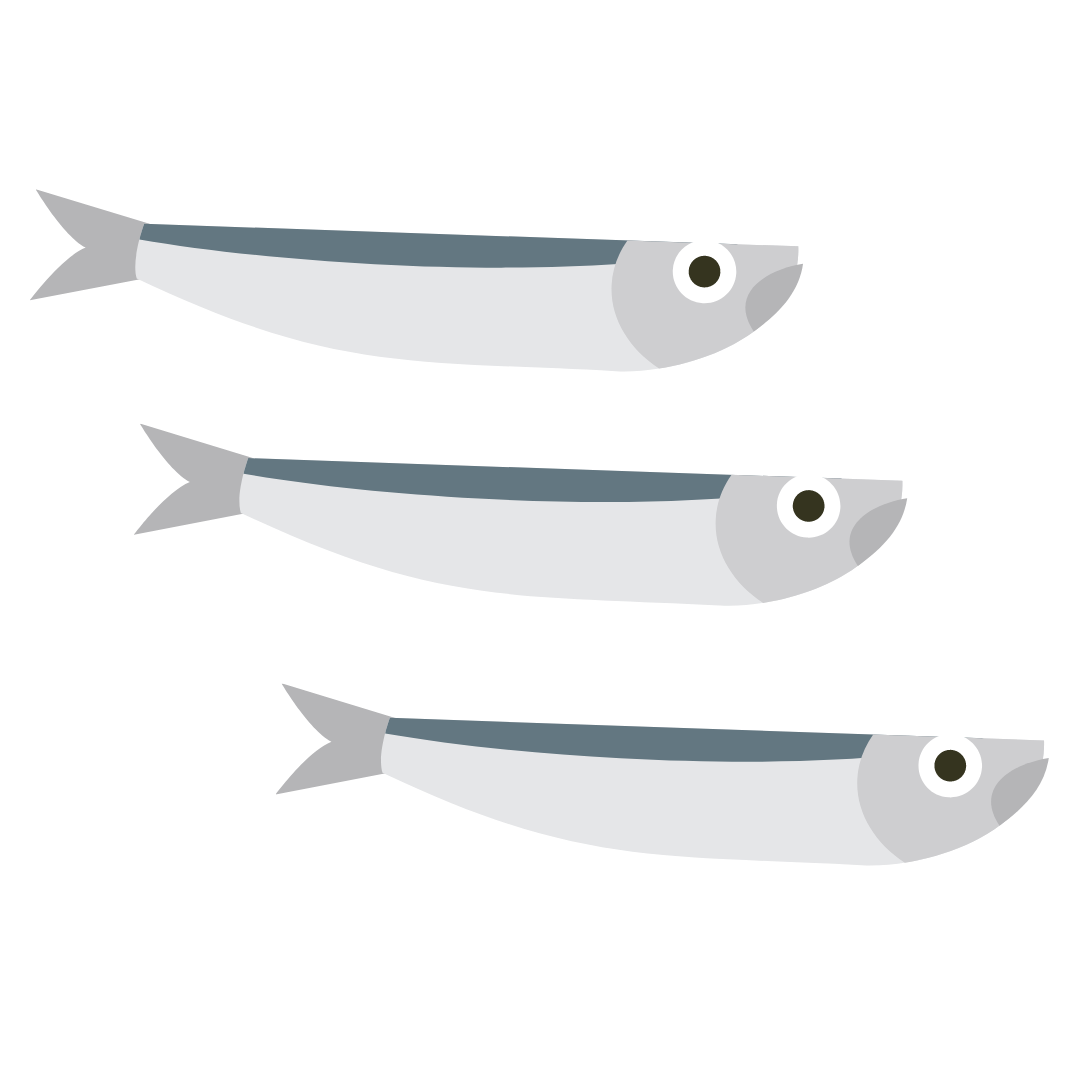
What are omega 6 and omega 3 fatty acids?
Omega 6 fatty acid
Omega 6 fatty acid is also essential and must be acquired with food. However, it is generally over-consumed. Omega 6 does support heart, brain, and overall health if consumed in appropriate amounts. It is important to know that omega 6 can be inflammatory in large amounts. Generally, we get too many of these fatty acids from processed foods and oils and must balance these with omega 3 fatty acids.
Omega 3 fatty acids
Omega 3 fatty acids are a type of polyunsaturated fat. They are an essential nutrient and must be acquired through our diet. Generally we don’t get enough quality omega 3 fatty acids from the food we eat.
Alpha linolenic acid (ALA) is the most common omega 3 fatty acid and is found in plant sources such as flax, walnut, canola, and soybean. The body has trouble converting ALA into DHA and EPA– the other two common omega 3s that our bodies need. Our bodies convert ALA to DHA and EPA at very low (less than 1%) levels. This is why fish are a much better source of omega-3s than plant sources.
We suggest that vegans supplement with fish oil supplements or if very strict algae oil.
Omega 6 to omega 3 ratio:
For optimal health, these two fatty acids need to be in balance.
Emerging evidence shows that in order to achieve optimal health, we need to reduce our omega 6 consumption and consume more omega 3. The ideal ratio is as close to 1:1 as possible, but 3:1 (omega-6:omega-3) is okay too. Most of us eat too many omega 6 fats (many Americans’ diets have up to a 20:1 ratio) and not enough omega 3. Omega 6s are easily found in processed foods (in oils such as canola, soybean, and grapeseed) and poor quality foods like conventionally raised eggs.
SMASH Fish
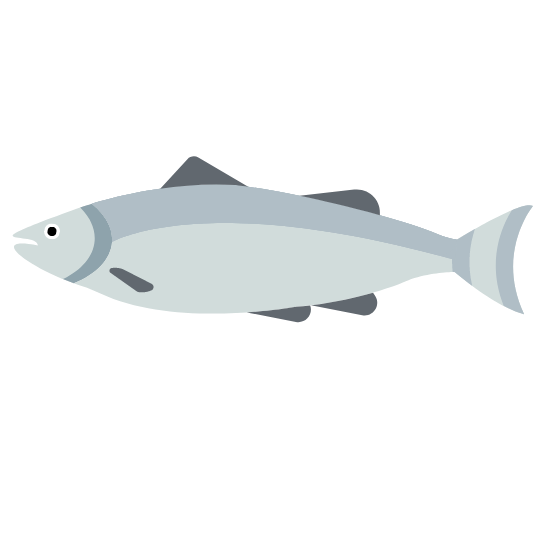
Salmon
- Buy packed in water rather than in oil
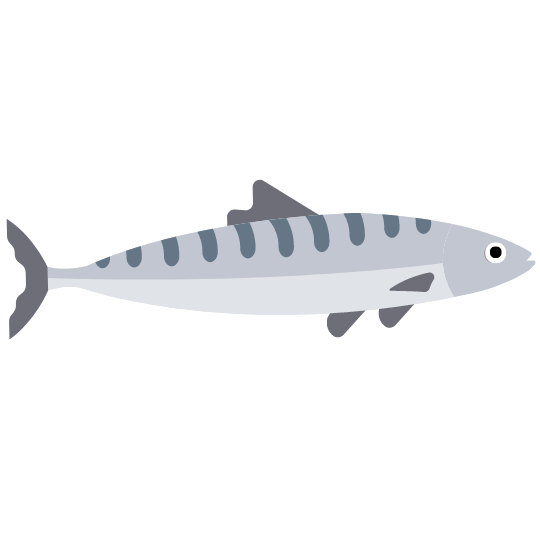
Mackerel (Atlantic)
- Size matters. We recommend the smaller Atlantic type
- Avoid King Mackerel brand (very contaminated)

Anchovies
- Buy packed in water rather than oil
- Buy whole
- Great for cooking as the fats don’t denature easily–they stand up well to heat
- Use them to salt your cooking!

Sardines
- Buy WITH bone and skin (more fat and Vitamin D)
- Buy packed in water rather than in oil
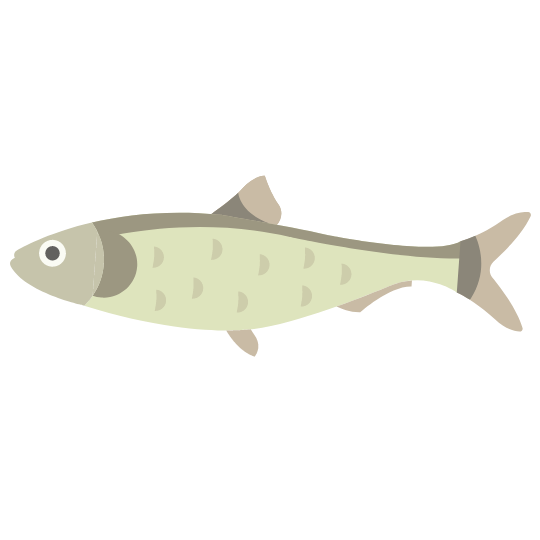
Herring
- Tastes best when the fat content is at it’s highest which is known as the “premium catch period.”
- In most cases, this is during the summer
OTHER COMMONLY EATEN SEAFOOD

TUNA
- Tuna can be high in mercury,
so it’s best to eat in moderation

Oysters
- Safe to eat

shrimp
- Safe to eat

trout
- Choose freshwater
Minerals
*must come from diet, body cannot make
- Supports bone and muscle health
- Improves energy
- Aids in tissue and cell repair (found in every cell)
- Necessary for proper nerve conduction
- Normalizes heart beat
- Helps body maintain a healthy pH (acid/base balance), allowing cells to perform optimally
*High amount (66% DV)
- Antioxidant
- Heart healthy
- Anticancer
- Decreases inflammation
- Reduces mental decline
- Supports thyroid health
- Boosts immune system
- Reduces asthma symptoms
- Supports bone and teeth health
- Necessary for muscle contraction and relaxation
- Heart healthy
- Co-factor (has to be present) for many reactions to take place
- Supports healthy blood pressure
- Supports normal blood clotting
- Prevents anemia (deficiency of red blood cells)
- Improves muscle endurance
- Boosts energy
- Boosts immune system
- Improves sleep
- Reduces bruising
- Supports normal blood clotting
- Boosts immune system
- Speeds up wound healing
- Reduces acne
- Decreases age-related illnesses
- Decreases inflammation
- Part of many enzymes for building protein and genetic material (DNA)
- Critical for normal taste
- Supports fetal development
- Assists in sperm production
- Necessary for normal growth and sexual maturation
*High amount (20% DV)
- Regulates the body’s fluid balance
- Nervous system health
- Regulates heart and muscle contractions
- Lowers blood pressure
- Protects against strokes
- Prevents kidney stone
- Protects against osteoporosis
*High amount (28% DV)
- Assists in production of red blood cells (prevents anemia)
- Regulates blood pressure and heart rate
- Necessary for iron absorption
- Activates immune system
- Supports bone and brain health and maintenance
- Promotes thyroid health
- Reduce risk of goiter (enlarged thyroid gland)
- Promotes fetal brain and nervous system development
- Improves cognition
- Promotes healthy birth weight
- May help treat fibrocystic breast disease (non cancerous painful breast lumps)
- Helps with water balance in the body
- Necessary for normal muscle contraction and relaxation
- Supports brain and nervous system health
- Regulates blood pressure
- Promotes skin health
*50% of the American population is not getting the recommended amount.
- Supports over 600 reactions in the body
- Helps create energy
- Helps create proteins
- Supports muscle contraction and relaxation
- Helps create and repair DNA and RNA
- Helps regulate nervous system
- Improves exercise performance
- Helps improve mental health
- Helps regulate blood pressure
- Fights inflammation
- May prevent migraines
- Reduces insulin resistance
- May improve some PMS symptoms
- Supports bone health
- Antioxidant
- Reduces inflammation
- Regulates blood sugar
- Decrease seizure activity
- Supports brain health
- Supports thyroid health
- Assists in wound healing
VITAMINS
*Note: One of the rare natural foods that contain this vitamin
- Builds strong bones and muscles
- Boosts immune system and reduces inflammation
- Stabilizes mood, antidepressant
- Promotes healthy weight
- Anti-cancer
- Essential for Calcium absorption
- Supports vision/eye health
- Boosts immune system
- Protects and revitalizes skin
- Improves fertility
- Critical for fetal development
- Anti-oxidant, cancer fighting
- Anti-oxidant (helps repair damaged cells)
- Anti-cancer
- B1 (Thiamin)
- B2 (Riboflavin)
- B3 (Niacin)
- B5 (Pantothenic acid)
- B6 (Pyridoxine)
- B9 (Folate, Folic acid)
- B12 (Cobalamin)
- Support cellular health
- Increase energy
- Improve eyesight
- Improve cardiovascular health
- Increase muscle tone
- Improve nerve function
- Increase brain function
- Support fetal development
- Boosts immune system
- Antioxidant (prevents chronic disease)
- Anti Inflammatory (reduces inflammation)
- May decrease blood pressure (relaxes artery walls)
- Helps to lower cholesterol and triglycerides
- May reduce anemia (helps absorption of iron)
- May slow down dementia and protect memory
Fat
*Highest amounts from any foods)
- Omega-3 Fatty acids
- EPA (Eicosapentaenoic acid)
- DHA (Docosahexaenoic acid)Note: only wild caught (not farm raised)
- Omega-6 Fatty acids
- Anti-Inflammatory. Excessive inflammation is the root cause of disease, cancer, and aging.
- Supports cardiovascular, immune, and nervous systems. Reduces clot formation thus less strokes and heart attacks. Reduces blood pressure by keeping blood vessel lining healthy and more.
- Promotes healthy aging throughout life.
- Critical for fetal development, particularly brain structure integrity.
- Brain health (protects against dementia, Alzheimers, and other neurodegenerative diseases)
- Promotes eye health, especially the retina
Very small amount
- Allow bones to better utilize calcium (meaning stronger bones)
- Protect liver by encouraging the liver to get rid of its own fat storage thus reducing fatty liver.
- Support brain and nerve health (the brain is composed more of saturated fat than polyunsaturated fat)
- Boost immune system
- Provide energy
- Help maintain weight by helping us feel full
- Promote lung health through surfactant
Small amount
- Anti-inflammatory
- Supports heart health by regulating blood pressure
- Provides energy
- Helps stabilize blood sugar
- Helps maintain weight
Antioxidants
-Member of the Carotenoids
-Gives Salmon its pink color
- Cardioprotective. May increase good cholesterol HDL. May slow down plaque build up in our arteries
- Anti-inflammatory
- Works with omega-3 fatty acids to protect brain and nervous system
- May help prevent skin damage and help you look younger
Protein
|
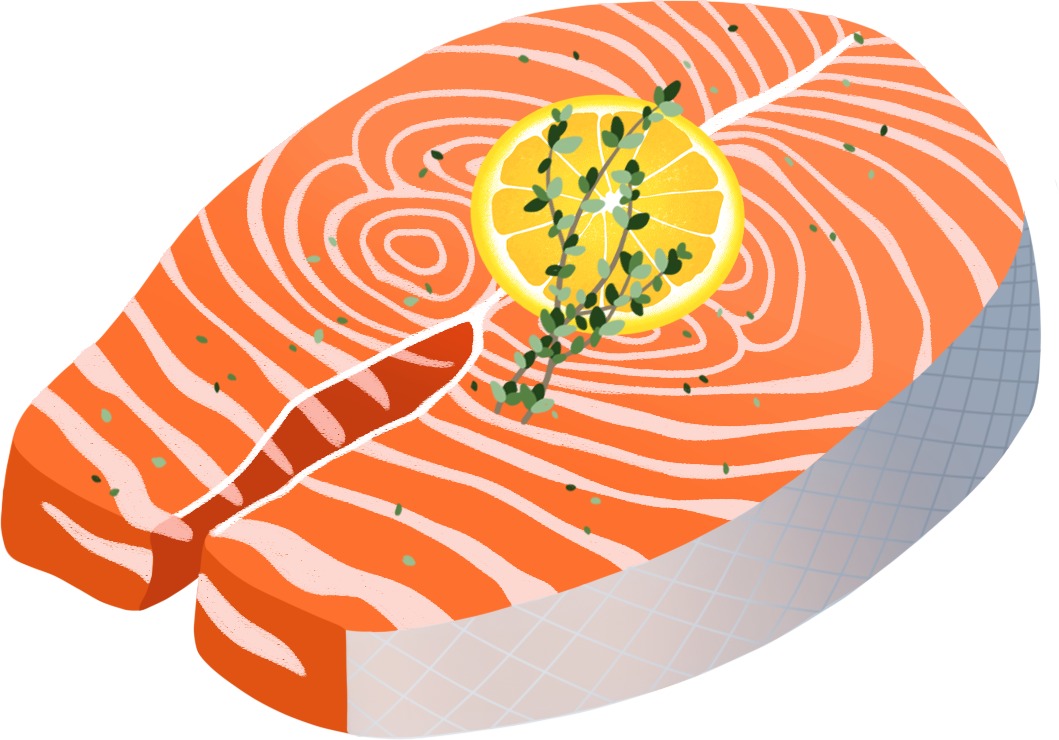
Did you know:
Some farm raised salmon are fed synthetic astaxanthin to imitate the naturally occurring carotenoid that they eat in the wild which gives salmon their pink color. Proponents argue that this synthetic compound acts the same as the naturally occurring one, but that’s often not the case. We prefer to stick with the naturally occurring astaxanthin.
Finally, when you feed fish artificially, the ratio of omega 3 to omega 6 changes, usually towards more omega 6 which is not what we want.
How to Buy:
For all SMASH fish, wild-caught is always best. Farm raised fish simply don’t have the same nutritional benefits in the same way that conventional meat isn’t the same as grass-finished/grass-fed meat.
Farm raised fish don’t eat from their natural habitat, similar to conventional chicken and cows. They are fed fish meal but also grains and soybeans, which are usually grown with heavy pesticide and chemical fertilizer use and cause inflammation in the fish as grains and soy are not their natural diet. Additionally, many farm raised fish are given antibiotics to prevent disease due to their crowded conditions. These crowded fish farms also create stress for the fish (stressed fish=unhealthy fish, just like us!) and pollute the waters they are farmed in.
Find trusted brands or trustworthy fish markets
See what brands are available at your grocery store and take the time to learn about them. Are they transparent about their practices? There are some good brands like Wild Planet and Fresh Catch that sell sardines, mackerel, and anchovies.
If you live by the ocean, find a good fish market where the workers will welcome your questions and help you find what you’re looking for. Even if you aren’t near the ocean, refrigerated transportation makes it possible to have fish markets inland. Find out where they get their catch from and how fresh it is.

Whole fish should have clear, shiny eyes, firm flesh that springs back when pressed, and should smell fresh and mild (never overly fishy or like ammonia). When buying frozen seafood, watch out for broken packaging or packaging with frozen ice crystals that may indicate that the package was allowed to thaw and refreeze. Frozen salmon should be hard, not bendable.
Canned Fish
Canned fish are a quick and inexpensive option that provides the same impressive health benefits as fresh fish. In fact, canned salmon is often wild rather than farmed, and its nutrition profile is excellent. Just remember to look for it in BPA-free cans to avoid the potential health risks that have been linked to this chemical. Wild Planet and Safe Catch are trusted brands.
We prefer to buy canned fish packed in water rather than in oil. If you do buy fish packed in oil, make sure you look to see what kind of oil it is. Avoid soybean oil, vegetable oil, canola oil, and the like. Olive oil can be okay, but we like adding it ourselves so we know the quality.
Canned fish can make a quick and easy meal, and since they store well, you can keep a few cans in the pantry as a backup healthy bite.
How to prepare and eat:
Whole Fish: Fresh and Frozen
Fresh fish should be eaten within one or two days of purchase. Remember, wild caught fish live in the deeper ocean water that is only a few degrees above freezing.
Fresh fish should be stored in the coldest part of your refrigerator or set on a bed of ice.
To thaw frozen salmon safely, refrigerate it overnight or seal it in a plastic bag and immerse in cold water. Cook salmon to an internal temperature of 145 degrees Fahrenheit. Once cooked, place salmon back in the refrigerator for consumption within a few days. Never eat fish that has started to smell rancid.
Fish is extremely versatile. It can be steamed, sautéed, smoked, grilled, baked, or poached. It can also be served raw in sushi and sashimi, but make sure that you buy sushi-grade fish.
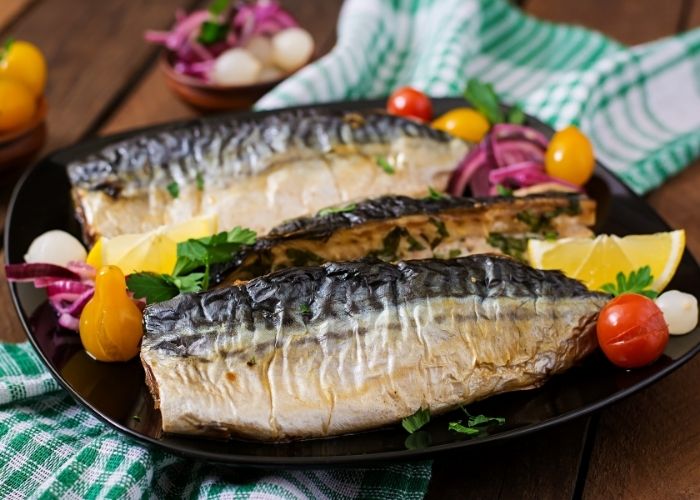
Just don’t fry it!
When you fry fish it destroys the omega 3s and some other nutrients so you consume fewer nutrients than baking or cooking fish. This makes sense since fried foods are typically more processed and contain more dangerous fats than other types of prepared foods.
Baking fish up to 400 degrees does not destroy the omega-3.
Baking or boiling the fish better preserved the omega-3 fatty acids. Additionally, combining the fish with olive oil also seemed to add extra protection to the omega-3 fats. So consider drizzling with EVOO either before or after baking the fish.
As a friendly reminder, eating undercooked or raw seafood is dangerous, especially for people who are pregnant or who have compromised immune systems. If you choose to eat raw salmon in sushi or sashimi, be sure to go to a reputable restaurant and understand that there is a risk of foodborne illness.
Quick and Easy SMASH fish meals:
- Spoon some sardines or mackerel onto some high quality bread, drizzle with olive oil and toss on some herbs or thinly sliced veggies (like bell pepper or cucumber or tomato).
- Make salmon salad! Tuna is not the only fish that makes a great salad. Swap salmon (or mackerel or herring) in for the tuna and use a healthy mayo.
- Whip up a Cobb salad with canned salmon, hard-boiled eggs, avocados, lettuce, and tomatoes.
- Grilled salmon with avocado.
- Roast salmon with coconut oil, salt and pepper. So easy!
- Bake an herb-crusted salmon with a side of veggies for an easy weeknight dinner.
- Make a salad with sardines or mackerel. I make my own maple vinaigrette dressing and it pairs so nicely with this salad! (1 tablespoon of maple syrup, ¼ cup of EVOO, squeeze of lemon, and salt.)
- And don’t forget to feed it to your babies as they learn to eat! Our one-year-old daughter loves sardines and mackerel, and they make for such an easy lunch!!

A note on supplements
Fish oil may be a useful supplement if your kids don’t like fish. We recommend Hardy Nutritional Essential Omegas and Nordic Naturals Ultimate Omega.
There are good studies indicating a strong correlation between fish oil supplementation and the natural benefits from consuming omega-3 fatty acids from original sources such as fish and grass fed meat and animal products.







